Fuzzy Electronics (& Magnetics)
Kjell Bjørgeengen / Frederik De Wilde / Jerry Galle / Doris Kuwert / Semiconductor / Bram Vreven

The exhibition Fuzzy Electronics (& Magnetics) highlights the importance of accidental changes in so-called “new” media. There are a number of frictions provided, causing irregularities that cast a different light on the tight framework of digital imaging. On the one hand there are references to phenomena such as physical alienation and nostalgia, while at the same time there is also room for the poetic possibilities of sensory deficient digital processes and surprising electro mechanics. The collision between complex analogue impulses, such as 16 mm or traditional black-and-white photography, with the binary logic of digital image grids, adheres with a number of artists as an important starting point. They refer to the phenomenon of contingency: unforeseen factors that crisscross and deregulate the computer-generated signals. Other artists focus more on electromagnetic and kinetic processes. All play with unpredictability and set off in search of the physiological and metaphorical jammers in the reduction process and strengthening process of technology and new media.
Kjell Bjørgeengen (°1951, Oslo) is one of the prominent Norwegian artists of the moment. He works in collaboration with innovative experimental musicians like Marc Ribot, Keith Rowe, Evan Parker and Joëlle Léandre. His installation work is very often monumental — for Network he created a new installation – which brings together a disorientating yet meditative experience. Beneath the chopping sound of approaching helicopter propellers, which include a.o. excerpts of music by Streifenjunko, strategically placed CRT tubes flicker at full strength. In the tradition of video pioneers like The Vasulkas, Bjørgeengen makes use of transmitted video and audio signals to illustrate and visualise the suppressed corporality of signal receiving media. With the support of the Office of Contemporary Art Norway.
with the support of Office of Contemporary Art Norway 
Frederik De Wilde (°1975, Aalst) began his research on the linkages between art and science with Electric Organ Discharge (EOD), a project in which he animates into image and sound the mating signals of bio-electrically-charged fish (Electric Courtship Songs). Throughout his very versatile practice he develops strategies to enhance interaction between humans, technology and nature to nano-technological levels. Currently he is exploring the sensitivity of fish in relation to pollution (EOD4) and the operation of their bio-electrical senses: the electro-sensitivities with which they map out the ecological parameters of their environment.
Jerry Galle (°1969, Antwerp) reveals the hidden life of images within a machine, often drawing from the one question: can a computer create art? Does the methodical logic of a computer stand in the way of humanity and poetry? Galle exposes not only the invisible mechanisms of digital images, but also shows how one develops through observation an intimate relationship with the images. The spectator - ad hoc witness the emergence of new images and meanings - balancing on a thin dividing line between the tangible aspects of the world on one hand, and the latent processes of imaging and observatories on the other.
Doris Kuwert (°1952, Bückeburg) studied visual art in Amsterdam and Berlin, and shows her work at home and abroad. The artist allows simple basic materials to be affected by electromechanical and electronic interventions to form subtle poetic audiovisual sculptures. In Netwerk she examines the influence of magnetic fields on the movement and sounds of small objects. The interaction between objects ranges from touching or clear collisions to hardly visible changes in position. These movements produce a richness of (enhanced) sounds that make all the physical components of the installation heard as well as felt.
Semiconductor exists since 1997 as co-operation between Ruth Jarman (°1973, Southampton) and Joe Gerhardt (°1972, Oxford). The British artist-duo makes audiovisual installations of cities on the move and systems in chaos. They sketch a playful but disoriented picture of a world-in-flux, a digital environment in which time frames explode and the natural order of things is broken. Sound plays a central role: it creates, monitors and decodes the images seen. In Magnetic Movie Semiconductor develops a range of aesthetics based on scientific observations of electro-magnetic turbulence from the sun and the Earth. The film was created during a residency in the laboratories of NASA in Berkeley, without a doubt an ideal location to explore the distinction between high tech science and less funded sci-fi fantasy.
Thanks to Matthew Miller (Fabrica, Brighton)
The work of Bram Vreven (°1973, Ghent) is made up of tightly composed visual structures, which by using different methods are often set in motion. Each composition developments as an elegant series of almost choreographic-like patterns through a silent rhythm that brings varying degrees of complexity. In Netwerk Bram Vreven shows a monumental kinetic sculpture, in which it’s large proportions become stressed by the flowing of movements. Simplicity and reduction are the basic principles, while combined with a sustained cyclical movement, the work gains a new complexity.

